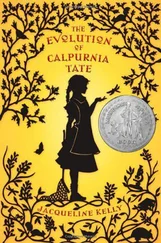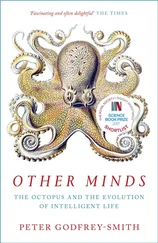By 1450 this mixed Mycenaean culture covered much of Greece and had become, at least socially, the dominant element in Cnossus. The political structure seems to have been one of autonomous feudal princes surrounded by their war-loving retainers, the whole under the nominal overlordship of Mycenae and supporting a life of luxury, idleness, and warlike adventure by the tribute imposed on Cretan commerce. The political relationship of Mycenae with Crete and the role of Cnossus are ambiguous. The mainland city may have functioned as an undependable ally or it may have already taken over political power in Cnossus by peaceful means, either through slow immigration or by marriage into the commercial oligarchy of the country. By 1430 some Mycenaeans were no longer satisfied with their role. Taking advantage of political difficulties that Minos encountered in Sicily, and using their recently acquired knowledge of seafaring, some of the Greek speakers arose in revolt, sacked Cnossus, and permanently moved the center of Minoan civilization to the mainland. The next period is accordingly known as the Mycenaean age (1430-1150 B.C.), and represents the Age of Decay of Minoan society.
5. Decay and Invasion
The Mycenaean peoples could sack and destroy, but they could not organize or control the complicated Minoan economic structure. This structure, based on commerce, required security and order along its trade routes or it could not function. Such security had been provided on the sea by the Minoan fleet, but now the unruly Mycenaean warriors began to seize rather than to nurture commerce. As piracy rose, trade declined. On land the long trade route from Argos to central Europe had been maintained because of recognition of mutual benefits and, above all, by realization that small demands for tribute would provide income for an indefinite period, while total seizure of goods would kill the activities once for all.
Although Cretan craftsmen continued for a long time to turn out work of high quality, the themes of this art became increasingly violent, turning from sun-drenched nature to scenes of war and the hunt. In time, artistic techniques declined, realism being replaced by heraldic beasts and geometric designs. The system was increasingly supported by piracy, plunder, and imposed tribute. Having crippled one great trade route to the north by the destruction of Cnossus about 1430, the Mycenaeans could hardly permit the rival route to continue, and about 1184 they captured and sacked the second great commercial city of the Aegean, Troy. This city, of Anatolian rather than Aegean culture, existed from early in the third millennium, and its many levels of occupation give the archaeologist a dramatic picture of its tumultuous history. Its greatest city, the second on the site, had been destroyed by the Hittite invaders about 1900; its sixth city, a relatively prosperous town, was destroyed by an earthquake about 1365. It was rebuilt almost immediately but was sacked, as described in Homer's Iliad, by the Greeks in the twelfth century. This event marked the end of the great Bronze Age archaic cultures everywhere in the West. Shortly afterward the Iron Age invaders, the Dorians, Phrygians, Carians, and Lydians, poured out from the upper Balkans and wiped out the Trojan, Hittite, and Mycenaean cultures together. A Dark Ages descended on the whole area west of the Levant for almost two centuries (1100-900 B.C.).
The process by which civilization, as an abstract entity distinct from the societies in which it is embodied, dies or is reborn is a very significant one. There are at least five steps in the process. Civilizations die as (1) decreasing political security and the ending of law and order make property precarious and make personal violence an increasingly significant element in life; accordingly (2) long-distance trade decreases; as a result (3) town life becomes precarious and there is a general exodus from the towns as people try to find a place in which they can be attached in some stable social and economic relationship to the food-producing earth; obviously (4) there is a decline and even a disappearance of the middle classes (the property-owning, commercial, literate, city-dwelling group); and (5) illiteracy rises rapidly. Civilization reappears through the same five steps, each in reverse: (1) law and order are reestablished; (2) commerce increases; (3) cities appear and grow; (4) a middle class, between soil tillers and fighting men, reappears; and (5) literacy reappears as a technique of record keeping and distant communication for the middle class.
This process has passed through these steps several times, two of them at the two extremities of the life of Classical civilization. This civilization, as is well known, had a "Dark Ages" at each end; the first, about 1100-900 B.C., marked the division between Cretan civilization and Classical culture, and the second, about A.D. 700 to 950, marked the division between Classical civilization and Western. Each "Dark Age" is the period between the five-step fall and the five-step rise of civilization of which we speak. In the earlier of the two, the political disorder that initiated the five-step sequence is associated with the Mycenaean exploitation and the Dorian invasions. Then, generations later, law and order were reestablished in the Mediterranean by the activities of the Phoenicians, and the five-stage sequence continued until Classical culture was established. The second "Dark Ages," at the end of Classical culture, was initiated by the political insecurity associated with the Germanic invasions and the fall of Roman political power in the West (A.D. 476); it was ended, and Western civilization begun, by the same five-step sequence beginning about A.D. 970.
The Iron Age invasions on both sides of the Aegean Sea established the basis on which the subsequent Classical civilization was to rise. In the Balkans itself the invaders (Dorians) came only a short distance from the north, but they came with such force and such destructive violence that the great mass of them ended up in southern Greece and in Crete itself. Thus in the Classical period these were Doric-speaking areas and still retained the crudities of their ancestors. The chief state and leader of this group came to be Sparta. On the other hand, the Dorians drove southward so rapidly that they did not turn eastward into the islands and peninsulas of eastern Greece, and large enclaves of Mycenaean (that is mixed Achaean-Cretan) culture persisted. In the Classical period these survivals are known as Ionian, and became the highest representatives of later Greek culture, undoubtedly because of the survival of elements of Cretan culture. Some Mycenaeans, driven from their homes in Greece by the Dorian advance, crossed the Aegean and settled on the middle shores of the western coast of Anatolia (Asia Minor). These are also called Ionians, and the shore on which they settled is known as Ionia. Thus, closely related Ionian peoples, with a similar culture and a common dialect, lived on both the eastern and western shores of the middle Aegean Sea after 1000 B.C. It was among these people, possessing strong elements of Minoan culture, that the new Classical civilization was born. This culture was passed on to the later society, not only by surviving vestiges of social customs and personal outlook, but more explicitly through the works of Homer. These works, written in Ionia after the Dorian invasions, are based on memories of the great deeds of the Cretanized Achaeans before the invasions.
9. Classical Civilization
Classical civilization, which occupied the shores of the Mediterranean Sea for almost a millennium and a half (950 B.C.-A.D. 550), follows the pattern of seven stages fairly closely, with no major distortions of the process. The only significant variation arises from the shape of the Mediterranean Sea itself, and this would not have given rise to a major distortion if it had not been reinforced by the fact that the Phoenicians (who provided the original impetus toward a revival of civilization in the Mediterranean basin) came from the extreme eastern end of the sea.
Читать дальше










